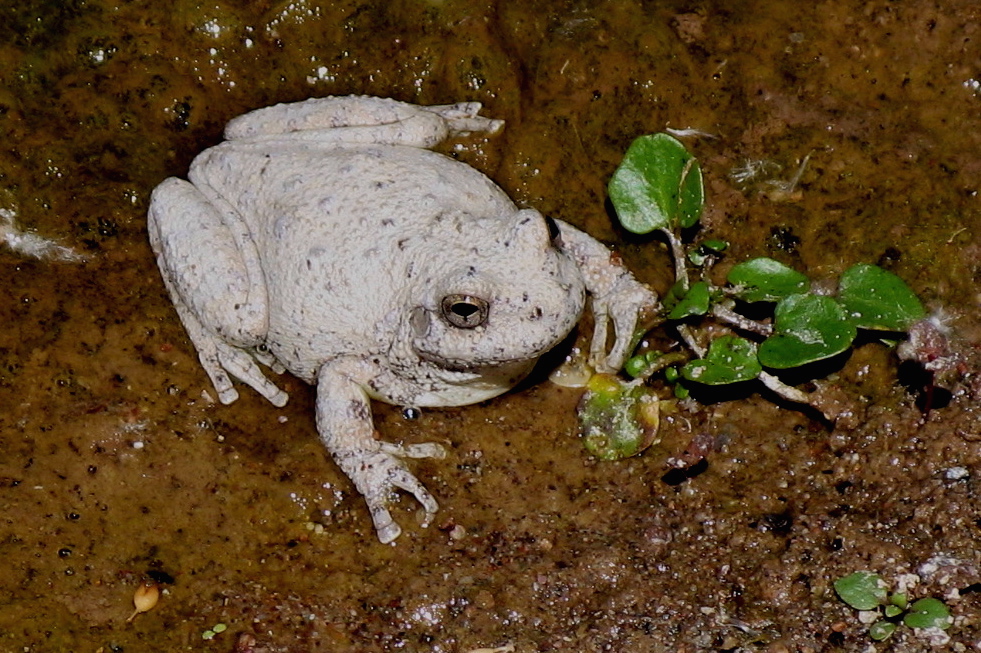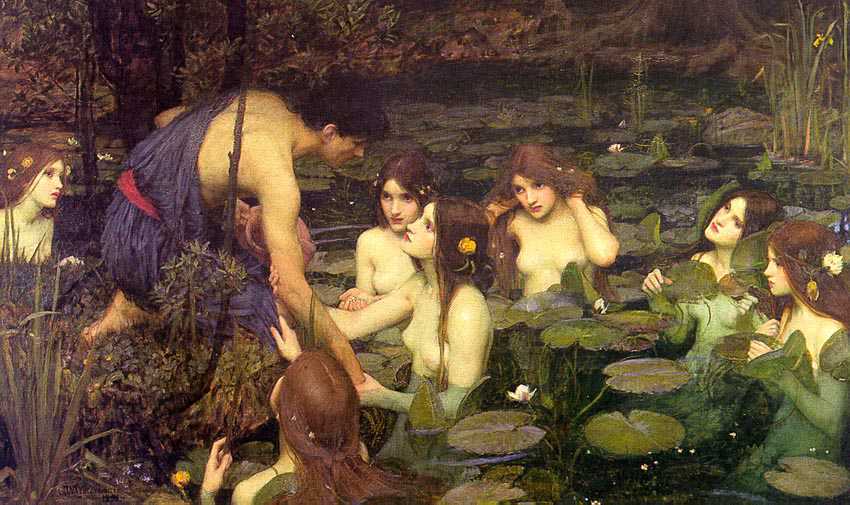Quite a Toadly Frog
It looks a lot like a toad, with a stumpy physique and warty skin, but it’s a Canyon Tree Frog (Hyla arenicolor). How to tell it’s a frog? One way: no parotoid glands — instead you can see the round flat areas of its tympani (hearing structures) behind and slightly below the eye. Also, this frog has large adhesive pads on the ends of its toes to aid in climbing (after all it is a tree frog), which most toads don’t do. Canyon tree frogs are variable in color and spottage (a technical term: feel free to pronounce it spot-AAHJ), but this individual is fairly pale and nearly spot-free. They inhabit rocky stream courses in Arizona and the Southwest with intermittent or permanent water, where they enjoy feeding upon small invertebrates. This one was photographed at Aravaipa Canyon. (Photo A.Shock, 2009)
Also, this frog has large adhesive pads on the ends of its toes to aid in climbing (after all it is a tree frog), which most toads don’t do. Canyon tree frogs are variable in color and spottage (a technical term: feel free to pronounce it spot-AAHJ), but this individual is fairly pale and nearly spot-free. They inhabit rocky stream courses in Arizona and the Southwest with intermittent or permanent water, where they enjoy feeding upon small invertebrates. This one was photographed at Aravaipa Canyon. (Photo A.Shock, 2009)
Etymology
Hyla arenicolor: arenicolor is a Latin compound meaning sand-colored: to the Romans as well as to us, an arena is a sand-covered area. The origin of the genus Hyla is a bit more complex, and much more picturesque. To start, the greek work ὗλη — cognate with the more familiar Latin sylva, means woodland, and may come into play in the naming of a genus of tree frogs.  But a more colorful tradition connects the genus name with Hylas, one of the original Argonauts who while searching for fresh water ashore was pulled into a woodland spring by a desirous water nymph. Hylas’s companions — including Herakles and Jason — searched the island for him in vain, crying his name over and over: the story goes that the incessant cry of his name relates to the repetitive calling of tree frogs.
But a more colorful tradition connects the genus name with Hylas, one of the original Argonauts who while searching for fresh water ashore was pulled into a woodland spring by a desirous water nymph. Hylas’s companions — including Herakles and Jason — searched the island for him in vain, crying his name over and over: the story goes that the incessant cry of his name relates to the repetitive calling of tree frogs.
above: the story of the rape of Hylas, “Hylas and the Nymphs” by J.W. Waterhouse, 1896. If you’re lucky enough to be in London during the next couple of weeks, check out the exhibition: J.W.Waterhouse: The Modern Pre-Raphaelite, it’s on at the Royal Academy until 13 Sept 2009. (And, there’s a pleasing similarity between the color schemes of the Waterhouse painting and the tree frog photo at the top: the watery-brown background, ivory skin tones and heart-shaped green foliage.)

[…] we pry them free, there are other things to look at such as the one above: the hindquarters of a Canyon Tree Frog blending in with Aravaipa Creek bed gravel. Oops, I gave it […]
[…] I never can resist posting Canyon treefrogs (Hyla arenicolor), those most toadly of frogs. […]